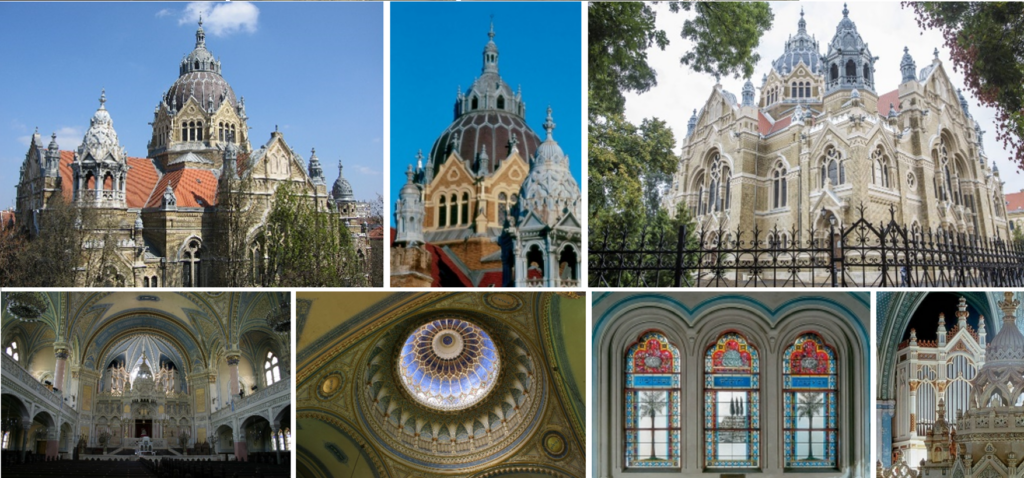
Parshath Noa’h (נח – Noah from the root נוח (to rest): “he is resting” or “he rested”), Genesis 6:9-11:32.
Genesis 7-6
. וְהַמַּבּוּל הָיָה, מַיִם עַל-הָאָרֶץ …
…and the Flood came, waters covered the earth
In 1879, in Szeged, Hungary, a flood of unprecedented magnitude broke out. Nearly 350 m3 of water per second breaks over the city. Almost the entire city is destroyed. The old synagogue built in 1843 by Henrik and Jozsef Lipovszkyego is one of the few buildings to have remained standing. Located on Hajnóczy Street, it is one of the most remarkable neoclassical buildings in Hungary.
Deemed too small for the community, a new synagogue designed by Leopold Baumhorn1 opened in 1903 nearby.

This new synagogue is one of the largest in Hungary2. Based on new construction techniques from the beginning of the 20th century, its frame is entirely metallic. Designed in a mixture of styles: Byzantine (the dome), Romanesque (the columns), Gothic (the starry vault above the organs) and Baroque (the exterior dome), it is considered to be of the secessionist-historicist style (one of the branches of Art Nouveau in vogue in the Austro-Hungarian Empire).
1 Lipót (Leopold) Baumhorn (1860-1932) was a Hungarian architect. He is buried in the Jewish cemetery on Kozma Street in Budapest. Over the years, he created his own style of architecture and built more than twenty synagogues (Brașov, Esztergom, Szolnok, Szeged, Budapest, Angyalföld, Gyöngyös, Újpest, Zrenjanin, Murska Sobota, Novi Sad, .. .).
2 48 m long, 35 m wide and 48.6 m high, it has 1,340 seats (740 for men and 600 for women in the galleries.




